- Bernard Preston homepage
- Starch
Meaning of starch
Meaning of starch enables us to better understand the pros and cons of carbohydrates.
Nowhere in the world of menu planning is there more confusion than about the role starches play in the growing obesity of the world. Many say you must avoid them in totality, others that in moderation they are fine and some believe that it is only the refined-carbohydrates that are problematic.
The meaning of starch is absolutely central to the dozens of myths about dieting; understand this page properly and you will discover the right way to deal with obesity and type-2 diabetes.
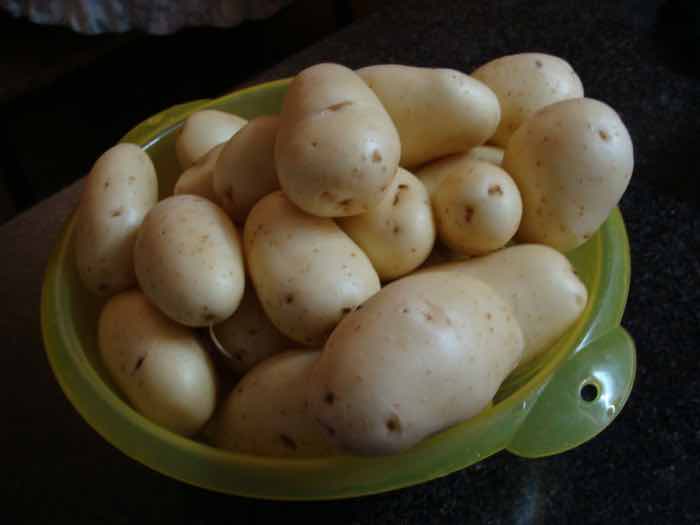
These diets are often based largely on opinion, rather than scientific fact; and usually grossly oversimplify a very complex-subject. What has to be faced though, with urgency, is that the predicted diabetes pandemic around the world is happening even faster than expected; and that is absolutely central in any discussion about the chronic degenerative diseases that kill far more people than viruses and bacteria.
For example in South Africa, amongst a random sample of Coloured people in the Cape, a massive 28pc have T2D[5]; nearly a third of all adults. Those figures date back to 2012; it will be worse now following the worldwide trend.
And amongst those South Africans of Indian-descent it is even higher; ten times greater than those in the subcontinent. It's lifestyle, not genetic. So what is the meaning of starch?
The chemistry
Starches consists of long chains of glucose-molecules
joined together; there are two types. Fully digested, both of them will
produce a ton of sugars; but they have a completely different effect on our wellness.
- 25% is amylose
- 75% is amylopectin
Amylose
One quarter of starch consists of a long chain of glucose units which is unbranched but curls itself into a helical-shape, making it difficult for enzymes to digest; it does not cause a surge in blood sugar. It's called amylose.
Amylopectin
The other three quarters is amylopectin consisting of a very large number of glucose units, up to hundreds of thousands that are highly-branched; this means they are readily digested in the small intestine producing a surge in blood sugar.
The ratio of these two starches varies in different carbohydrates but typically is about 1 part to 4; in other words around 80% could be problematic for the diabetic depending on many factors as we shall discuss further down this page.
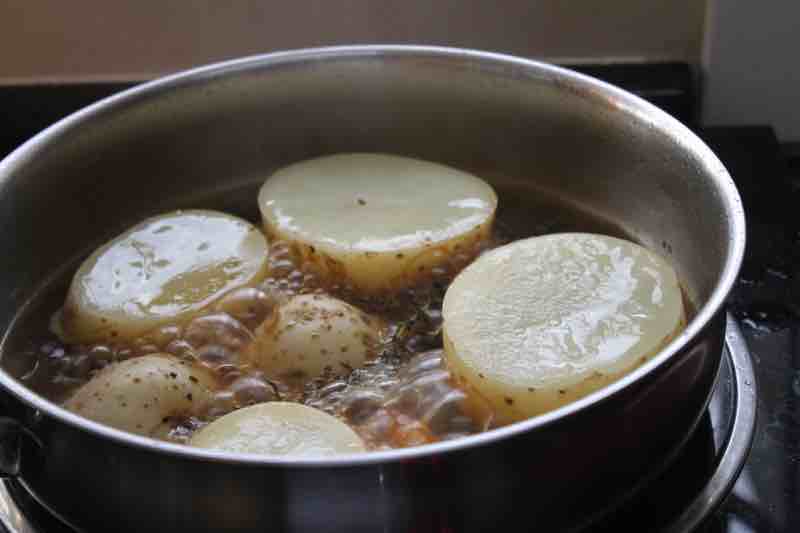
Braised new potatoes for example with their crispy crusts and soft centres can be enjoyed by most people. They are hard to get and quite different to those commonly found in supermarkets, coming out of cold-storage; yes, it is complicated.
Our modified potato gratin, with newly-lifted spuds too won't have a dramatic effect on your blood glucose. There is added fat in the way of cream and cheese; and humus for protein, all lowering the glycemic index. Keep the load down however if you have a weight problem or are diabetic; small portions.
Again potato gratin made from cold-storage potatoes is highly suspect for all, except those who are very active; then much of the glucose is turned instead into glycogen. In general it should be remembered that the spuds most readily available in supermarkets and restaurants are a driver of insulin-resistance.
Baked potatoes from cold storage have a higher GI than sugar; for high and holy days only.
This page was last updated by Dr Bernard Preston on 9th April, 2023.
Poly-saccharides
Long chains of glucose molecules are called polysaccharides. That is how grains and vegetables store the energy they collect from the sun; and are the chief source of fuel for humans who eat plants.
Starches are typically
found in potatoes and corn, for example; but also in fruit like apples
and in legumes. They are in all foods, the whole and the processed; they are not the very devil.
Butyrate
Remember that amylose, the one-quarter fraction, is slow to digest and is known as "resistant starch." It passes through the small intestine where it's not easily broken down by enzymes that would normally form glucose, but reaches the colon; where it is fermented by the normal flora producing healthy short chain fatty acids like butyrate.
This compound is an important marker of the happy colon; if it is only produced in small quantities, then all sorts of disturbances occur in the body. There is a sharp rise in the autoimmune diseases like lupus and rheumatoid arthritis, for example.
Put differently feeding the microbiota in the colon is important; if all the starch is digested in the small intestine leaving none for these bugs, they starve and our bowels and overall well-being will suffer.
So are you acquiring some understanding of the meaning of starch?
Perhaps you are wondering, why on earth is a DC writing blogs all about starch. Well, all sound practitioners have a responsibility for the overall well-being of their patients; and not just the subluxations in their spines, caries in teeth and pathogens in the sinuses.
What we eat and whether we exercise, probably will have a more profound influence on how long we live, and the quality of that life, than these other lesser important criteria.
So to summarise, amylose is a resistant starch, because of the helical nature of the molecule; is not well digested by the enzymes in the small intestine and much tends to reach the colon, where it is termed a prebiotic.
Amylopectin on the other hand is highly-branched and rapidly digested; and quickly absorbed in the small intestine, giving a blood sugar rush, outpouring of insulin and then stored in adipose tissue.

I acknowledge the Nutrition Network for this important slide. It reveals how within 28 years of the McGovern guidelines being introduced, changing our food to refined starches rich in amylopectin we became so obese; devoid of fat and fibre folk became constantly hungry. The simple sugars found in colas, cakes and cookies contributed further to the surge in diabetes.
It's all about hunger and satiety. What is a dietary fiber is of central importance.
Notice too that modern man is getting shorter as well as fatter; stunting of children, both physically and intellectually, is a serious problem.
Meaning of starch
Meaning of starch will enable you to grasp which of the carbohydrates make us fat; and why how they are cooked, prepared and served is so important.
So we should be looking for those carbohydrates that are slowly digested in the small intestine, forming smaller amounts of glucose which is indeed rapidly absorbed; but a larger proportion of the starch should reach the colon where it is fermented rather by the bugs known as our normal flora.
Potatoes
How that carbohydrate is prepared in the kitchen also has a profound effect on the way it is digested.
Let us start by considering potatoes, a staple in most of our meals. If you deep-fry them, they have an extremely high glycemic index; they are very rapidly digested and absorbed in the small intestine.
Likewise though to a lesser extent, the same is true of boiled potatoes and mash. That is not a good idea and, if eaten every day, will make you obese and set you on the road to weight gain and insulin resistance. That is particularly true of the russets.
Instead enjoy rather red and new potatoes that form a creamy, smooth mash; they have a greater proportion of resistant starch and are more likely to reach the colon undigested. Are you beginning to grasp the meaning of starch?
Diabetics thus can often enjoy new potatoes that cause only the normal postprandial rise in blood sugar; two hours later their finger pricks are normal. Test yourself though to be sure.
They tend to be expensive and one is never sure just how new they are; can you scrape the skin off with your thumb nail? The best solution is to learn how to plant potatoes.
"There is increasing evidence that exposure to plants and green space, and particularly to gardening, is beneficial to mental and physical health."
- Clinical Medicine (PMC6334070)
Retrogradation
Allowing starches to cool overnight in the refrigerator, and then reheating them the next day is the better way to do it; it takes some planning but the molecules undergo "retrogradation" making it yet more difficult for the enzymes to digest them in the small intestine.
Chilling and then reheating resistant starch is a good way to feed those bugs in the colon; and save you from the obesity often associated with refined carbs.
Of
course all the resistant starch in Idaho will be quite useless if the
microbiota is seriously depleted as is very common in those eating the "industrial diet;" the food found in the average grocery store. Enjoying these kefir benefits
every day changes everything; it is so easy to make at home. The
friendly bacteria and yeast cells will do a wonder for your colon.
Vichyssoise, the way the French would enjoy our Irish potato leek soup
employs this principle of retrogradation; they enjoy it cold. Better
still cool it for longer overnight and then reheat it the next day for a
meal; and add some cream.
Many starches like brown rice for example are far more palatable if allowed to cool and then reheated later.
So there are good starches and those that contribute to cardio-metabolic disease. The Carbohydrate Quality Index was supposed to help us distinguish between them but one feature of the test is fatally flawed.
Low GI bread
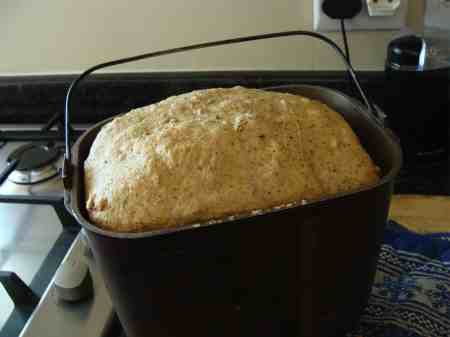
Through what I can only describe as wicked, fake reporting, millers are allowed to describe their flour as "wholemeal" provided they extract less than 40 percent of the germ and bran.
Thus you will read that wholegrain bread has a high glycemic-index; and so it does, if you buy it from the supermarket. You should avoid it.
This kind of false reporting only serves to confuse us when trying to grasp the meaning of starch. After all, surely wholegrain bread should be low GI; and so it is if you use real 100 percent meal.
There is a revolution happening in the world of baking, demanding real-bread that is made from 100% wholemeal. Frankly it is still very difficult to find and you certainly will not discover it in the local supermarket.
Questions about our bread, meal planning and carb counting are central to wellness.
You may be lucky to have a specialist baker in the district but most likely you will have to cook your own low GI bread; it means having a wheat-grinder. The upside is that it takes only five minutes to prepare the dough, tastes divine and costs a fraction of the price of the local artisan loaf.
Once you understand the meaning of starch you will that the carbs are very resistant to digestion and absorption as sugars in the small intestine. It certainly will not make you obese; again small portion sizes.
Personally I bake our low GI bread most days. It really only takes five-minutes including the grinding of the 100 percent wholemeal flour; and tastes absolutely divine.
This page on what is starch in food gives deeper information about the glycemic response of the body to bread.
Whilst previously, eating so-called commercial whole grain bread, I found it necessary to have at least three slices; and use various jellies, hams and processed meats to feel satisfied. This lead directly to what is known as "chronic over-consumption of carbohydrate;" and my own obesity.
Commercial bread tastes utterly boring unless it is dickered up; or peanut-butter with the added sugar and hydrogenated oils.
Now our own low GI loaf, and even more so our artisan bread tastes so divine that I rarely add anything other than butter; it simply needs nothing else to make my fussy-tongue happy. I love my food.
Understanding about the carbohydrate count chart is important too; and will you help your overall grasp of the meaning of starches.
Corn on the cob
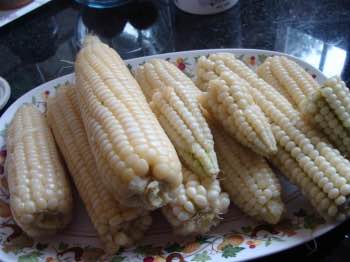
I am yet to find out exactly the meaning of starch concerning fresh corn on the cob but I presume that like new potatoes the amount of resistant starch is significantly higher if you pick them young; despite enjoying our mealies as we call them in South Africa, daily for three-months in the year, straight from the garden neither the good wife nor I have put on a pound. In fact we have lost a few.
Straight from the garden you can enjoy a mealie a day without guilt.
Once your starches have sat in cold-storage, or at the green grocer for a few days, it appears that not only does the taste regress but there a rise in blood sugar and the threat of insulin resistance; there is less resistant starch.
The resistant starch in true whole grains is the long lost secret to permanent weight loss.
Meal plans like the Paleo and Banting assume that you will not easily be able to get fresh corn on the cob, new potatoes or 100-percent wholegrain bread; for the majority that is certainly true. But once you understand the meaning of starch, you no longer need to live in terror of enjoying unrefined carbs.
In summer carbs galore is potentially a problem in our green garden; but because they are unrefined we don't put on weight.
If we want to enjoy our carbs without a consequent increase in our waistlines, then we either have to grow them ourselves, or frequent the farmers' markets for fresh veggies; and bake our own bread. There is no other way.
Obviously I am recommending how to grow corn. You have to keep the chickens out when the plants are small.
The first signs of corn in flower is a day of rejoicing in our household.
Unfortunately if you are banting or on the paleo plan, this quick succotash recipe is out of the question; both the corn and lima beans have starch. Nevertheless both have a low glycemic-index; neither are fattening as they have largely resistant carbohydrate. Do limit the load by having smaller amounts if you are obese.
So why were cornflakes invented?
Maize meal
Whereas white-maize on the cob has a low glycemic index, once ground and refined the way South Africans love it as "pap," the GI rises dramatically to 83 which is very high.
Even unrefined maize meal enjoyed hot has a high glycemic index of 71. Thus it should be cooked the night before, cooled and allowed to retrograde; and portion-sizes kept small.
However there is wide divergence of the reported GI of maize meal. Du Plessis et al for example report that the figure is between 39 and 50[6].
Currently this is a subject I am pursuing since I love freshly-ground maize meal porridge; and will test myself for the postprandial glycemic response.
How do net carbs work is the next subject under discussion; it's all about the fibre or lack thereof.
Why is whole grain better is a question we should all be able to answer.
Actually it's really perfectly obvious, only whole grains are very difficult to get.
Corn flour milling machines can be used to extract the most valuable fractions, selling them as hominy chop for animal feed.
Oats muesli or porridge
Oats is another grain that is often refined to remove the fibre, vitamins and other important phytochemicals like ferulic acid; food companies want to extract them and sell these nutrients back to us as supplements.
Look for the whole steel-cut or rolled grain and expect to cook it for longer; these Quaker oats recipes will give you some ideas. We have one of them every single day for the satiety they bring and their powerful ability to lower blood-cholesterol. Then you can enjoy butter without guilt.
Again cook extra porridge, cool it overnight and reheat the next day allowing the starches to retrograde. We now like to make this steel-cut oats recipe for breakfast; there are two mystery ingredients that help reduce any surge in blood sugar.
Luckily margarine is out and butter is back.
Newsletter
Our newsletter is entitled "create a cyan zone" at your home, preserving both yourself and Mother Earth for future generations; and the family too, of course. We promise not to spam you with daily emails promoting various products. You may get an occasional nudge to buy one of my books.
Here are the back issues.
- Lifestyle and ideal body weight
- What are ultra-processed foods?
- Investing in long-term health
- Diseases from plastic exposure
- Intensive lifestyle management for obesity has limited value
- A world largely devoid of Parkinson's Disease
- The impact of friendly bacteria in the tum on the prevention of cancer
- There's a hole in the bucket
- Everyone is talking about weight loss drugs
- Pull the sweet tooth
- If you suffer from heartburn plant a susu
- Refined maize meal and stunting
- Should agriculture and industry get priority for water and electricity?
- Nature is calling
- Mill your own flour
- Bake your own sourdough bread
- Microplastics from our water
- Alternative types of water storage
- Wear your clothes out
- Comfort foods
- Create a bee-friendly environment
- Go to bed slightly hungry
- Keep bees
- Blue zone folk are religious
- Reduce plastic waste
- Family is important
- What can go in compost?
- Grow broad beans for longevity
- Harvest and store sunshine
- Blue zone exercise
- Harvest and store your rainwater
- Create a cyan zone at your home
Oats milk
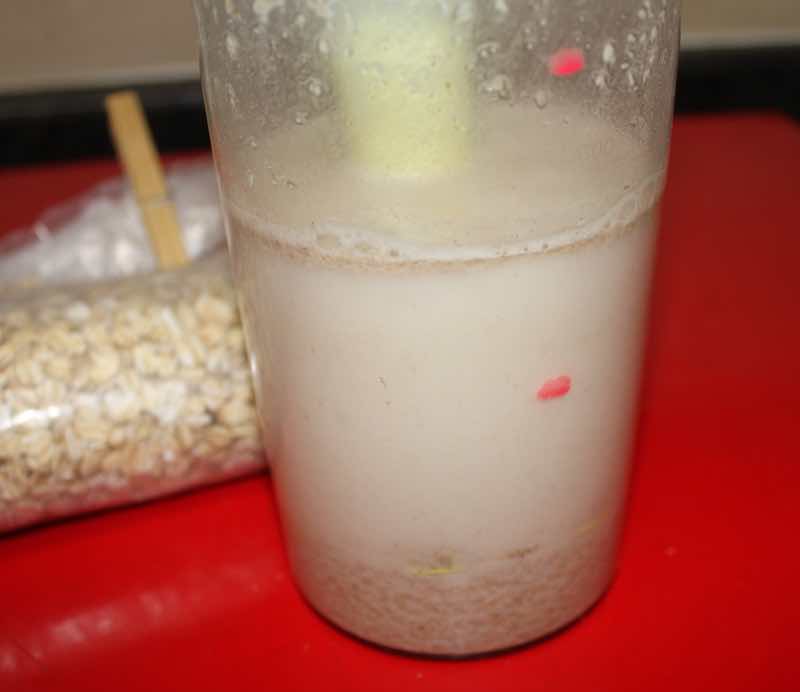
Making an oats milk extract as an alternative to dairy is extremely simple and you can do it in your own kitchen in less than five-minutes; though it should stand for another ten before straining.
At R2.20 per litre, a mere pittance in dollars or pounds it makes no sense to go out and buy oats milk.
The stick blender ranks in my top five favourite kitchen appliances. I wouldn't be without it.
Rice
Consumption of whole grains like brown unpolished-rice has been strongly linked to a lower incidence of cardiovascular disease.
However enjoying white rice has exactly the opposite effect. Data from the new PURE study published in the American Journal Diabetes Care shows there is a strong association between the refined grain and type 2 diabetes[4].
The strength of this study is the huge number of participants living in 21 different countries. The conclusion of the authors is that we should:
- Change to unpolished brown-rice.
- Add pulses and legumes to our meals; the protein and fibre lower the glycemic-index of the rice.
Really it is astonishing that the world eats so much white-rice; it is from the first study of its effect on well-being that led directly to the discovery of the first vitamin, thiamine. A deficiency causes the very serious "beri" disease.
Okinawa is one of the five Blue Zone countries of the world but the wellness of the people there has taken a dive since changing from traditional sweet-potatoes to white rice as their source of starch.
Read more about the importance of thiamine by typing "generalised muscle weakness" into the site-search function in the main menu above.
Glycemic response to the starch in legumes
Legumes like chickpeas, beans and lentils whilst being the main source of protein for most of the people of the world, also have some starch; the resistant kind. For this reason they are banned from the menus of those following the paleo or banting plans; erroneously so, I believe. Once you grasp the meaning of starch, you will understand why.
The reason is that most, with the exception of fava beans, have a very low glycemic response to legumes; they have a higher proportion of amylose, the resistant starch, and a lot of fibre.
Favas only have a higher GI because they are usually eaten skinned since they are almost impossible to buy, fresh, young and tender. There are no figures for the whole beans, but I'm certain they are low too.
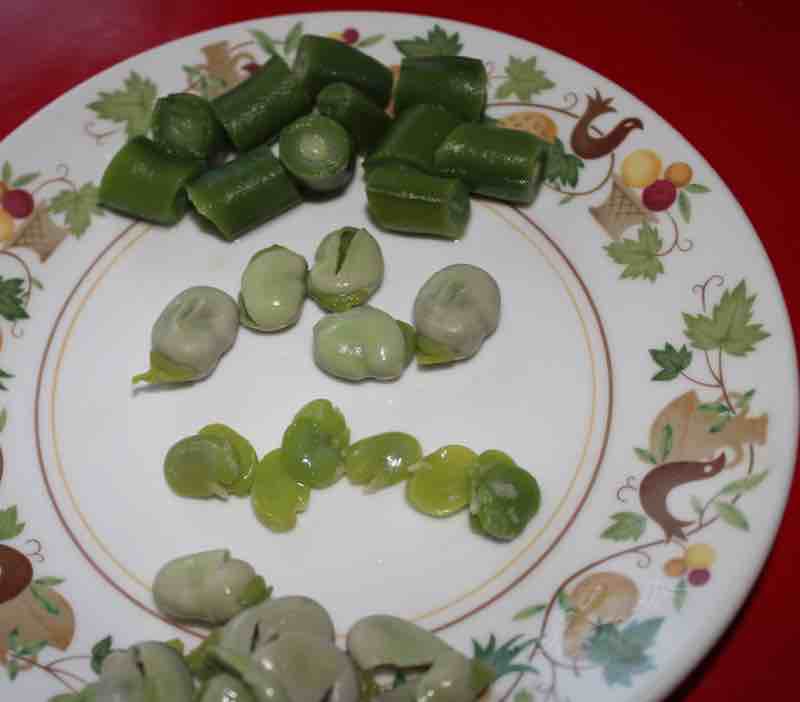
Also, adding protein to a starch, lowers the glycemic index; it is built in to the legumes.
All told legumes are not a threat to the waistlines of those seeking to lose weight. They simply do not produce an abnormal postprandial rise in blood sugar; they are not fattening. Instead, knowing about resistant starch and avoiding the easy carbs in the main is the way forward.
The other obvious response to those advocating these low carb plans is that we must all then get our protein from an animal source; it is neither affordable for the majority nor is it sensible.
You will more likely die of a malignant tumour instead; an even worse story than sudden death from a fatal heart attack.
Weight loss
In short understanding the meaning of starch means we have a much better opportunity of achieving meaningful weight loss in a helpful way.
Legumes, real bread and freshly-picked starchy foods from the garden are not the cause of obesity. We know what is; those carbohydrates that are rapidly digested in the small intestine causing a surge in blood sugar, outpouring of insulin and deposition in the adipose tissue and then the liver.
The first step to losing weight permanently in a nutritious and sane way, is to forget the term diet; permanently. Eradicate it from your vocabulary and thinking; it is a dirty four-letter word, because none of them work in the longer term.
Understanding the meaning of starch and its role in the wellness menu, searching out for the real, slow food that our great-grandparents ate is the way to a modest waistline.
What are the ketogenic diets and why are they so controversial?
Weight loss research is now confiming that refined carbohydrate rather than fats are the underlying cause of obesity.
More fascinating research confirms that using food as medicine can put type-2 diabetes completely into remission without the use of drugs.
BMI
So, what is your BMI? This will tell you how important it is to get started on this journey.
Are you in the dark green? Misery lies ahead if you do not do something soon; pain, pills and disability. Start today by purchasing some seeds for the garden, buy a packet of dried chickpeas for making your own hummus and find a local farmers' market.
Good luck, it can be done.

Our delicious, low GI hummus recipe, other legumes and 100-percent real bread are the way I recommend to lose weight permanently; and fresh vegetables and fruit straight from the garden or greengrocer.
There is interesting research that shows that cumin plus lime, two of the main ingredients in hummus are more effective than a common weight-loss drug.
It is sustainable, nutritious and absolutely scrumptious; banting the modified way if you insist on a diet, is reasonable. Better still, just grasp the meaning of starch and follow your own inner sense. Those nasty menu plans just do not work; only 5 percent of people one year later have actually lost weight and many have put on.
Let me say it again, diet is a dirty four letter word. Rather look to this glycemic index calculator to decide which foods are making you fat; and which are kosher.
Boiling vs baked
The way we prepare a starch has a profound effect on the way it is absorbed in the alimentary canal. For example, if you have been planting sweet potatoes you will probably be astonished, as I was, to discover that both the glycemic load and the index are dramatically different when comparing boiling vs baked.
Nutrition is a complex subject; I hope this contributes to your understanding of the meaning of starch.
It is sad perhaps but a fact that baked sweet potatoes have a very high glycemic index of 94; they are absorbed in the small intestine and instantly raise the blood-sugar. That makes them very fattening.
But a boiled sweet potato, as in our butternut soup recipe has a low GI of 44; that makes it a very good starch that is not in the slightest fattening. Much of it passes through the small intestine undigested and instead feeds the microbiota in the colon producing excellent short-chain fatty acids instead of glucose; it does not add to the girth and also gives protection against the neurodegenerative conditions like Parkinson's disease.
Boil your starches; do not bake or roast them if you care more about being hale and hearty than the dictates of your tongue.
And better still, after cooking refrigerate them overnight and reheat them before enjoying them; so that retrogradation can occur.
Understanding these matters is what better wellness is all about; grasping why simple carbohydrates are not all bad and complex starches are not all good.
You can read more about this anathema at simple vs complex carbohydrate.
Insulin resistance
Jack Sprat and his wife Noleen enjoyed exactly the same food; but despite together licking the platter clean, he was thin as a rake and she was two-yards around the midriff. How can that be?
Noleen's liver and muscles are unable to utilise blood glucose in the normal way; she is insulin resistant. It is partly genetic but largely induced by food high in sugar and refined starches; chronic carbohydrate over-consumption. I suspect she has a sweet tooth but Jack loves a spicy-dish.
Probably as a young girl she was allowed unlimited candy and ice-cream but Jack's mother said that he could only have treats now and then; researchers have found that the microbiome is established in early childhood. Noleen was unwittingly programmed to be obese.
There is only one solution; Noleen has to avoid all refined starch and even whole carbs have to be taken in moderation. Read more about Kitty who was "two yards around," to quote Shakespeare.
Noleen should certainly know how to test for prediabetes. The best examination is the HbA1c. It should be below 5,5%.
Currently there is no other acknowledged way; if Noleen refuses she will first become obese, then insulin-resistant and finally diabetic. Then her toes will start to fall off, she will go blind and drop off the planet long before her time from a heart attack or stroke; not pleasant and quite unnecessary.
Actually it is a blessing now that she understands the meaning of starch; she will be far more hale and hearty for avoiding sugar and cake-flour and getting to know about the natural carbohydrates. She will join those doing a victory dance when she sees the first corn or potatoes in flower. She can enjoy them fresh from the garden in moderation; always keeping the load down. That means small portions.
Also important for Noleen is something very simple that could make a big change to her levels of energy and tendency towards raised serum glucose; she should start daily adding a little cinnamon in her cooking. Strong research shows that it improves insulin-sensitivity enabling her cells to take up circulating sugars more easily.
Cinnamon and diabetes, and in fact other spices such as turmeric are huge subjects all on their own.
Whilst exercise particularly after a starchy meal is very beneficial in almost every way, it does little to help with sheding pounds. Weight-loss research confirms that only half the calories burned by the obese actually contribute; the body compensates.
Studies on lowering blood glucose have found that predigesting the flour as happens in sourdough baking hydrolyses the gluten into tripeptides that inhibit the influence of an enzyme called DPP-4; this makes it friendly for even those who are on one of the ketogenic diets. This prolongs the effect of the "incretin hormones" that stimulate the pancreas to produce more insulin and less glucagon.
Twenty year diabetes rule
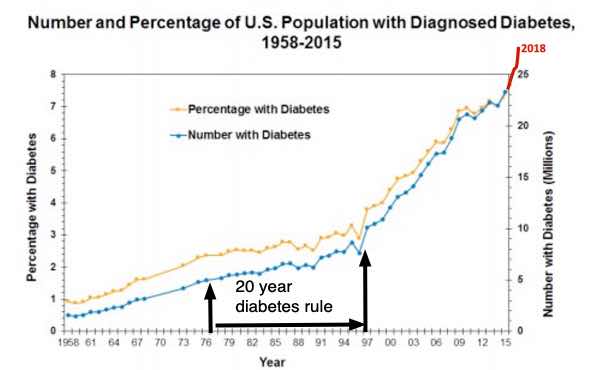 Campbell's 20 year diabetes rule
Campbell's 20 year diabetes ruleDr George Campbell's twenty year diabetes rule is mandatory reading for all those who value their lives.
The 10 year diabetes rule comes to the fore when we eat far too much sugar and refined grains; chronic over-consumption of carbohydrate.
Sustainability
The food plans that limit calories just don't work because they simply are not sustainable; worse, most of them leave you constantly famished. The secret is to strictly limit all refined starches but ironically add a little extra fat; the good ones like avocado, olives and coconut oil especially.
You will read a lot of different opinions which have confused the best of us. Don't give up on weight loss and reducing your naughty starches. The Awesome Chef has many good ideas for you, whether you eat meat or not; how to sustain a low-carb plant based plan[7].
Beer
Beer of course contains a lot of starch; 26g of alcohol and highly glycemic maltose to be more precise. That is more carbohydrate than a diabetic should have in the whole day.
But what about the rest of us whose weight is good, lifestyle wholesome and get plenty of exercise? I set out to measure my glycemic response to beer; your body may of course react quite differently if you have a weight problem, or suspect you are prediabetic. If you want to live into your eighties, then I recommend you get a glucometer and test yourself.
My most significant discovery is that if I take a short ten minute walk after a starchy meal, it will completely stop a surge in blood glucose; but if I sit down at the computer after lunch, it rises to unacceptable heights.
Turmeric extract
In an interesting article[1] in the journal of the ADA a strong study on 200 prediabetic patients, researchers found that not one of the group taking a turmeric extract progressed fully to the type-2 disease.
Having said that, South African Indians have one of the highest rates of diabetes and heart conditions in the world despite enjoying turmeric regularly; polished white rice, cake flour and sugar are the chief problems.
If you do not grasp the meaning of that, all the turmeric and cinnamon in India will not keep the chronic degenerative diseases of the heart, kidneys and pancreas at bay.
However 16.4% of those in the placebo group did become full blown diabetics within 9 months.
Moreover tests on the beta-cells in the pancreas that produce insulin showed improved overall function and less inflammation.
In fact studies on rats show that even in T1DM those beta-cells may recover with curcumin, the active ingredient in turmeric.
Using food as medicine scientists have proven that most type-2 diabetics can put their disease completely into remission without the use of any drugs.
Useful links
- Curcumin Extract for Prevention of Type 2 Diabetes
- 100% flour: https://tinyurl.com/253ca5zt
- Cooking chickpeas
- Excess white rice intake linked to new onset of Type 2 Diabetes
- High prevalence of diabetes mellitus and metabolic syndrome in a South African coloured population
- African maize porridge: A food with slow in vitro starch digestibility
- How to sustain a low-carb vegetarian plan
- Two yards around; Shakespeare's description of Flagstaff in the Merry Wives of Windsor.
When browsing use right click to follow a link, and "open in a new tab", or you may get a bad gateway signal.
Did you find this page interesting? How about forwarding it to a friendly book or food junkie? Better still, a social media tick would help.
- Bernard Preston homepage
- Starch
Address:
56 Groenekloof Rd,
Hilton, KZN
South Africa
Website:
https://www.bernard-preston.com